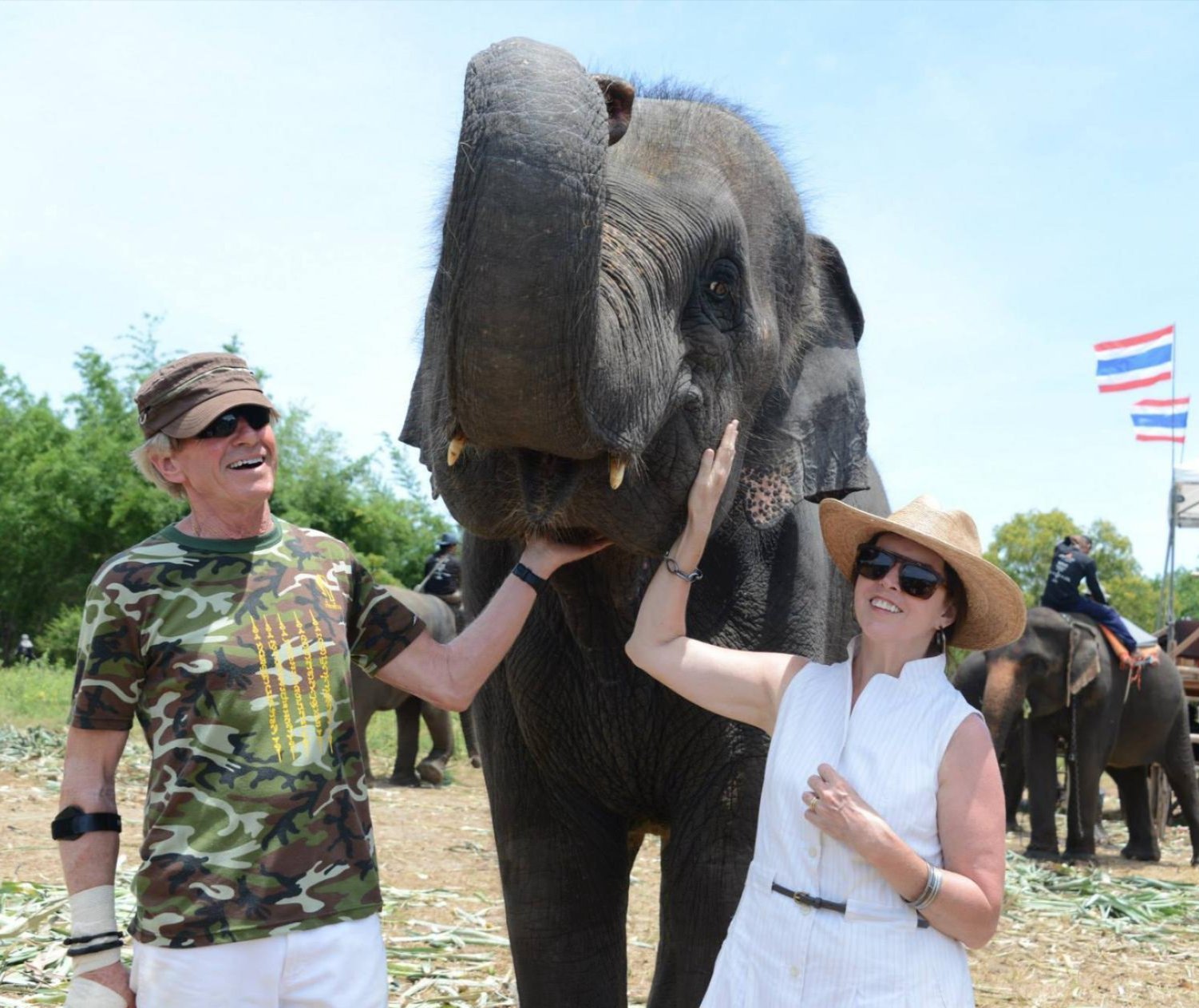RAND CORPORATION WAS RIGHT, THOUGH THE POLITICIANS IGNORED THEM
Recently, we published an article entitled a Critical Voice in The Vietnam War Passes. We referenced Daniel Ellsberg who worked for the RAND Corporation and his role in the release of the Vietnam War research and evaluation by former foreign service officers Lowenstein and Moose in the late sixties. The research efforts directed by Senator William Fulbright were compiled in a document referred to as The Pentagon Papers. Ultimately, Senator Fulbright was unwilling to release the condemnation of the war and the actions of President Nixon. Lowenstein then passed the findings on to Daniel Ellsberg who released them. Ellsberg suffered considerable pressure and litigation but survived the process and is now facing a terminal cancer situation at age 92 with the courage and aplomb one could expect from such a brave man. Ellsberg went on to say that he could now salt his food all he wanted as he had been deprived for some time.
Coincidentally, I recently picked up an obscure book published by The RAND Corporation in 1970 entitled North Vietnam and The Pathet Lao Partners in The Struggle for Laos as written by Paul F. Langer and Joseph U. Zasloff of the RAND Corporation. The authors preface their book as an examination of the North Vietnamese role in Laos as a senior revolutionary partner providing assistance and direction to its junior partner in the conduct of a revolution. As their period in Laos overlapped with that of mine, I found the critical perspectives presented from the North Vietnamese side regarding their communist Pathet Lao combat associates were almost identical to my observations of the Lao government Forces Armées du Royaume (a.k.a. FAR as the French abbreviation) who were supported by the U.S. I thought a more appropriate name for the Lao government military should have been “FARCE” and the North Vietnamese forces seem to have had the same view of the Pathet Lao. That situation was not universally true in the Lao government as the Minister of Finance was very capable and a good friend of mine.
Below is a map showing in black the communist controlled portions of Laos in March 1961 as highlighted in President Kennedy’s speech. Had Kennedy not been assassinated in November 1963 and been re-elected, it is almost certain that he would have withdrawn from the Vietnam War. Despite Lyndon Johnson’s statement on October 24 that “We are not about to send American boys 9,000 or 10,000 miles from home to do what Asian boys ought to be doing for themselves.” We know Johnson walked away from that message and 58,220 American troops lost their lives. Moreover, Johnson’s ill-conceived declaration of a bombing halt over North Vietnam in 1968, radically increased the ground activities of the North Vietnamese in the Plain of Jars and the corridor for the Ho Chi Minh Trail. The Ho Chi Minh Trail down the eastern border of Laos became the route for North Vietnamese troops and supplies to access South Vietnam.
My responsibility during the period of the Langer and Zasloff study of Laos was to administer aviation fuel supply and logistics from the Esso Eastern major import terminal in Vientiane Laos across from Thailand. The fuel was flown to a host of locations that ranged from air drops of banded fuel drums and large rubber bladders to refuel Air America evacuation helicopters at bases under fire. Underground fuel storage for airstrips such as the one outside of Luang Prabang provided air support to the Hmong piloted fighter planes in the Plain of Jars to the northeast. The fuel supplies to Luang Prabang were shipped by barge during the rainy season to support the CIA-directed attacks by the Hmong fighters in the Plain of Jars which is the black area under North Vietnamese control in the 1961 era map. By the late sixties, much of the eastern portion of Laos would have been colored black in any update of President Kennedy’s earlier map.
Vientiane was sort of a “guns free” Casa Blanca setting during the late sixties as a “neutral city” though one had to be very careful at night as I learned one evening when I slipped out the back door of a bar as several Pathet Lao drunks were talking about putting the only pale face gringo there in the ground. Oh well, those sorts of situations underwrote the intrigue and excitement of the place. However, a truckload of Pathet Lao troops, as shown below, can be a bit unnerving driving down the streets of the capital of the country and as they certainly do not blend in with the American Caltex oil sign.
AIR&SPACE FORCES magazine published an article by Walter J. Boyne in June 1999 that provided a detailed account of the various troop levels in Laos during the 1968-69 period. Simply stated, both the Pathet Lao troops and the FAR troops on the other side were equally indifferent and ineffective. The North Vietnamese directed their side of the war and the CIA directed the western side, utilizing the committed and effective Hmong hill tribe army under the command of Vang Pao which was supplemented by as many as 17,000 Thai army soldiers.
As the U.S. played along with the Geneva Convention restriction of no foreign troops, the U.S. side was conducted by mercenaries, including U.S. military personnel who were “sheep-dipped” to become civilian pilots for Air America. If you were a paleface in Laos, you were ultimately subject to their rule. I only had one ugly encounter with them which was over fuel and money.
The CIA had leased an aircraft to a Corsican opium runner who failed to pay them. In turn, the CIA demanded we not sell the Corsican fuel in Ban Houi Sai on the western side of Laos. Unknowingly, I called on the drug runner with an offer to sell him two DC-3 aircraft I received from a local bank to settle a debt to us from another Lao drug runner. The Corsican was very upset that we would not sell him fuel and pulled a gun on me. I told him I would take the next plane to Bangkok to resolve the matter. He told me to advise the CIA pilot in town to leave which I did and the pilot said the plane was not safe. Ironically, I had flown in the same aircraft to Luang Prabang the week before and was concerned it could not reach an altitude above the mountains. Sure enough, it crashed the next week on an approach to Luang Prabang so that matter was amicably settled and we resumed the fuel supplies though the Corsican stole the two DC-3’s I was trying to sell him. The message here is one should always pick their fights when weapons are brandished unnecessarily.
Over the period of the war, the Hmong forces suffered some 30,000 casualties though the civilian Hmong population was all but exterminated by the victorious communists to eliminate them as a cleansing retribution following the end of the war. Most everyone on the U.S. side was a mercenary following no rules. The Hmong people lived in the mountains overlooking the Plain of Jars which provided critical access into Laos from North Vietnam. The Hmong forces were led by Vang Pao who was trusted by the U.S., recruited by the CIA in 1961 and fully supported by everyone on the U.S. side until the war ended in 1975. By the end of 1968, Laos was invaded by 40,000 well-trained North Vietnamese troops and supported by about 35,000 Pathet Lao. Neither the Pathet Lao nor the Lao Government FAR troops were much of a factor. The “FARCE” army was overloaded with generals that provided little leadership or support for their people.
Vang Pao’s troops were the first line of defense and suffered the consequences. Over the years, the charismatic leader had monumental victories and some heavy defeats. Eventually, his army consisted of pre-teenage children and men over 45. I had great respect for his Hmong pilots who flew out of our Luang Prabang landing strip. Clearly, the FAR government forces there did little but steal aviation fuel which caused great losses to civilian vehicles due to the higher octane of aviation fuel. I was there once to fire the Esso Lao manager for theft while the FAR officer stared at me throughout the process. I was relieved to look up and see an Air America helicopter hovered overhead as the Hmong piloted T-28 bombers made short flights to bomb and fire rockets at the North Vietnamese. A light bulb flashed in my mind that, given their short flights to reach the enemy forces, coupled with my upsetting the sideline business of the FAR airport defenders, I had no friends there and it was time for me to lay low and leave as soon as possible. Below is my favorite image of the charismatic Vang Pao.
The Plain of Jars was the site of continuous invasion by the North Vietnamese in the dry season with Vang Pao’s troops counter attacking during the rainy season. Ultimately, the North Vietnamese prevailed and held the ground as their personnel resources vastly exceeded those of the depleting Hmong population. The U.S. response was to bomb the Plain of Jars back into the stone age. The other prime target was the Ho Chi Minh trail on the eastern border of Laos. One can wonder whether the facial expression on the Buddha image below reflects the sadness of the Buddha considering continued U.S. bombardment of a sacred historical burial ground dating back to 11th century.
U.S. bombers pummeled these two target areas with very little regard for human casualties. They dropped over two million tons of ordinance on Laos during the war which made it the most heavily bombed country in the world on a per capita basis.
For clarity’s sake, the RAND Corporation (research and development) is a nonpartisan American nonprofit global policy research think tank founded in 1948 that conducts research in a host of different disciplines. It is largely financed by the U.S. government and a plethora of other institutions. The company assists other governments, international organizations, private companies and foundations with a host of issues. After reading their conclusions on the conduct of the Vietnam War, I am a true believer in their grasp of situations and ability to reach sound conclusions. The fundamental question is what can be done to put their conclusions and research in front of our politicians to eliminate unnecessary deaths. We understand the egos of successful politicians but there is a long list of major bad decisions made over many years that resulted in unnecessary loss of lives and did nothing to improve American security. When will our leaders ever learn?
Shop Our Latest Picks!

A Purchase That Means More.
Our products are from Asian elephant countries offered to fund programs for the families and their 300 elephants in Baan Ta Klang, northeast Thailand. Your support enables us to provide two native English-speaking teachers in the village as well as underwrite a portion of the veterinary services for the elephants.







